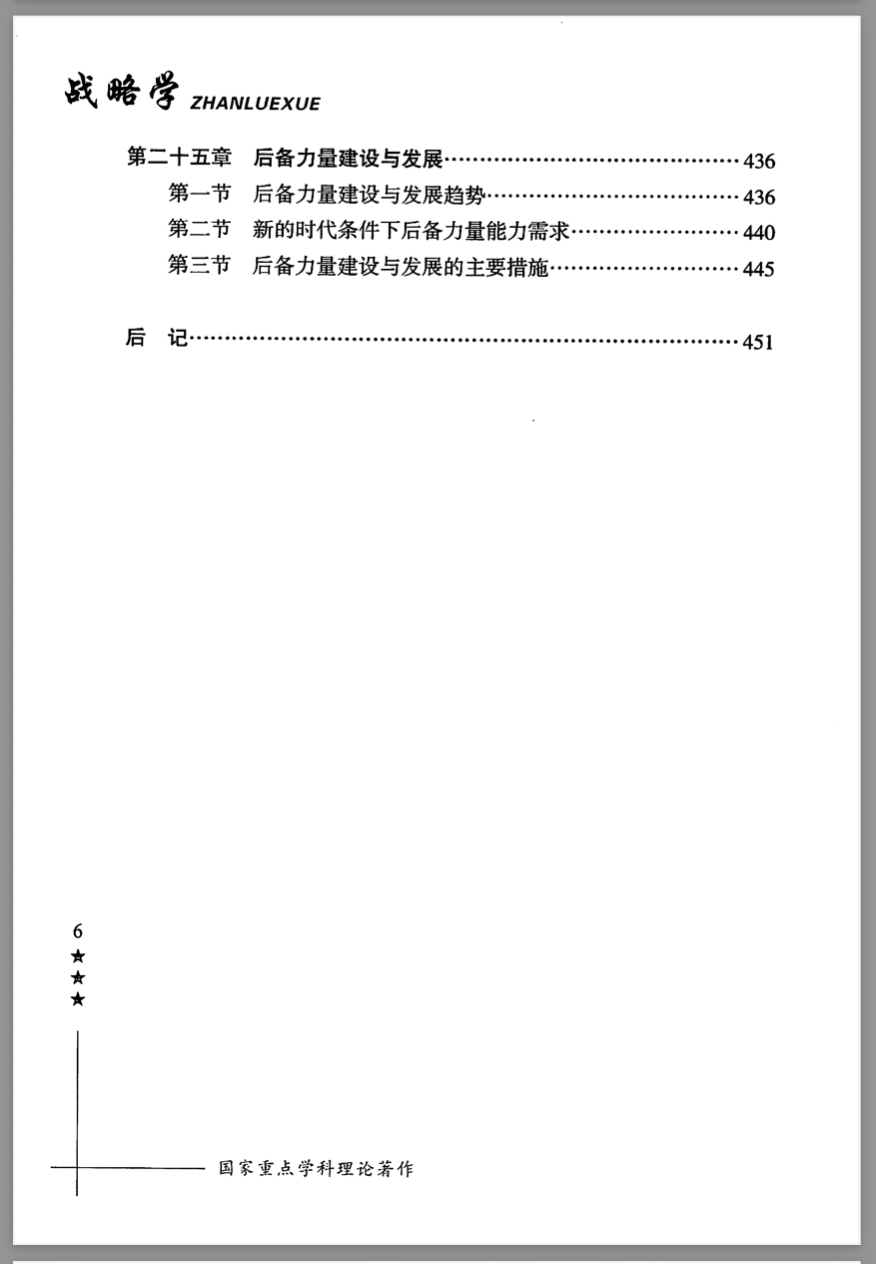Illuminating China Brief Article by Joel Wuthnow: “What I Learned From the PLA’s Latest Strategy Textbook”
Joel Wuthnow, “What I Learned From the PLA’s Latest Strategy Textbook,” Jamestown China Brief 21.11 (25 May 2021).
A must-read! Joel Wuthnow’s analysis of the new (2020) edition of PLA NDU’s Science of Military Strategy, a key PLA textbook. It contains a number of updates in response to PLA reforms, but also suggests a revision to the military strategic guidelines. Key excerpt:
“One of the key judgements underpinning the [military strategic] guidelines is the “basic operational form” (基本作战形式, jiben zuozhan xingshi), which can be thought of as the dominant features of modern warfighting that may require the PLA to adapt or innovate. In the 2020 revision, Chapter 13 on operational guidance (作战指导, zuozhan zhidao) makes the new statement that this has shifted from “integrated joint operations” (一体化联合作战, yiti hua lianhe zuozhan) to “multi-domain integrated joint operations” (多域一体化联合作战, duo yu yiti hua lianhe zuozhan) (p. 264-7). The latter refers to an “advanced stage” of joint operations consisting of a high level of operational coordination across domains, including land, sea, air, space, cyber and the electromagnetic spectrum, and also the cognitive domain (智, zhi).[7]
Introduction
In August 2020, China’s National Defense University (NDU) released a revised version of its Science of Military Strategy (战略学, zhanlüe xue) (SMS), a core textbook for senior PLA officers on how wars should be planned and conducted at the strategic level. This article compares the 2020 version of this book with its last revision, in 2017, and finds that the former contains new details on wartime political work, “intelligentization” concepts, China’s military strategic guidelines, major war operations, joint logistics and the People’s Armed Police. It should be a go-to reference for those seeking to understand Chinese military thinking as it is currently explained to PLA officers themselves.
Background
Over the last three decades, China’s two premier defense institutes—the Academy of Military Sciences (AMS) and NDU—have produced several editions of the Science of Military Strategy. AMS published new editions in 1987, 2001 and 2013. NDU published new editions in 1999 and 2015. In May 2017, NDU released a revision (修订, xiuding) to the 2015 edition, and then released another revision in August 2020.[1]
The postscript to the 2020 SMS explains that the recent revisions were necessary to “better adapt to the major trend in the form of warfare shifting from informationization (信息化, xinxi hua) to intelligentization (智能化, zhineng hua), elucidate the characteristics and rules of military struggle in the new era, reflect the newest results of national defense and army reforms, and promote innovation in our strategic theories” (p. 452). These volumes are best described as doctrinal teaching materials: previous editions have been included in the curricula at NDU, whose function is to train commanders at the senior colonel level and above.[2]
Although the books themselves are not “doctrine” per se, it is likely that the authors had access to—and based some of their judgements on—classified or otherwise non-public materials, including China’s formal military strategy, known as the “military strategic guidelines” (军事战略方针, junshi zhanlüe fangzhen). Reviewing changes in the SMS over time can thus reveal insights into new issues, perspectives, and developments that the leaders of China’s professional military education system believe need to be imparted to PLA officers. … … …
Conclusion
The 2020 SMS is not a fundamental rethinking of China’s military strategy but provides new insights in all three of its main parts. When translated and widely available, it should be the standard reference for foreign scholars looking to better understand Chinese thinking at the strategic level of warfare. It is also worth considering how the PLA will close the gap between frequently updated teaching materials on military strategy and core texts at the campaign and tactical levels that are now quite old. The Central Military Commission’s issuance of a new outline for joint operations in November 2020 (PRC Ministry of Defense, November 26, 2020), for instance, could prompt NDU to revise its Science of Campaigns (战役学, zhanyi xue), which has been an often-cited resource for PLA watchers but whose last edition dates from 2006.















































